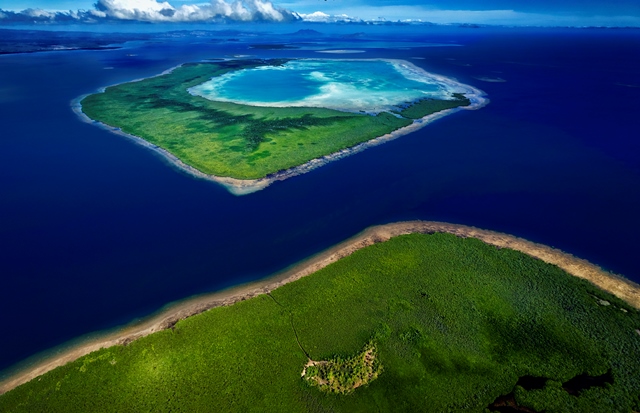
Aichi Biodiversity Target 11 By 2020, at least 17 per cent of terrestrial and inland water, and 10 per cent of coastal and marine areas, especially areas of particular importance for biodiversity and ecosystem services, are conserved through effectively and equitably managed, ecologically representative and well-connected systems of protected areas and other effective area-based conservation measures, and integrated into the wider landscapes and seascapes.
14 November, 2018, Sharm El-Sheikh, Egypt - “Investing in biodiversity for people and planet” is the theme of the world’s largest biodiversity conference in 2018 hosted in Sharm El-Sheikh, Egypt. The event brings together over 190 Parties to the 14th Conference of the Parties (CBD COP14) to the UN Convention on Biological Diversity along with partners, private sector and NGOs to enhance action on global commitments to halt the loss of biodiversity.
CBD COP14 is crucial for the Pacific islands region as our biodiversity is at the core of cultural beliefs and customs, it helps shape how people live and is the foundation for Pacific livelihoods. Despite this, the Pacific is one of the most vulnerable regions to loss of biodiversity.
High on the agenda over the next two weeks is the start of the negotiations for a post-2020 global biodiversity framework to replace the Global Strategic Plan for Biodiversity 2011 – 2020. As it is now, the international community has committed to the 20 Aichi Biodiversity Targets to be met by the year 2020.
“For our Pacific islands region, Aichi Biodiversity Target 11 on Protected Areas is a key focus, and a target we have been making some achievements towards – at least with the marine component of the target,” said Mr Stuart Chape, Acting Deputy Director General, Strategic Policy and Technical Programmes of the Secretariat of the Pacific Regional Environment Programme (SPREP).
“We have excellent examples across the Pacific islands region, including the Marae Moana Marine Park in the Cook Islands, which covers all of the country’s Exclusive Economic Zone, declaration of whale and shark sanctuaries, and the Micronesia Challenge that brings together five Pacific island nations with the objective to effectively conserve at least 30% of the near-shore marine resources and 20% of the terrestrial resources across Micronesia by 2020.
The Micronesia Challenge is now in its twelfth year and is a commitment from the Federated States of Micronesia, the Republic of the Marshall Islands, the Republic of Palau, Guam, and the Commonwealth of the Northern Marianas Islands, collectively.
Nevertheless, Pacific biodiversity continues to be under threat. The 2013 SPREP State of Conservation Report for Oceania, reported over 1,300 Oceania species as vulnerable, endangered or critically endangered with 127 species already extinct. Of more than 300 mammal species, almost 20% are threatened with extinction.
“It is essential that we turn this tide of threat and loss and increase our endeavours to protect our ‘web of life’ in the Pacific islands,” said Mr Chape.
“Despite the excellent initiatives taken by some Pacific island countries to establish marine protected areas effective protection of terrestrial and coastal habitats remains at a low level.”

For example, despite understanding the importance of protecting mangrove ecosystems for livelihoods, food security and coastal protection their destruction continues in many Pacific island countries, often sanctioned by government agencies in contradiction to national policies. A similar situation prevails with regard to loss of forest ecosystems and consequent land degradation.
The combination of continuing biodiversity loss and climate change impacts poses critical challenges for Pacific island societies that must be considered when making decisions to achieve sustainable development. It is in our hands to make a difference.”
The CBD COP14 will take place from 17 to 20 November 2018. It is preceded by the High-Level Segment which is held on the 14 – 15 November.
Other meetings also to take place over this period include the ninth meeting of the COP serving as the Meeting of the Parties to the Cartagena Protocol on Biosafety as well as the third meeting of the COP serving as the Meeting of the Parties to the Nagoya Protocol on Access to Genetic Resources and the Fair and Equitable Sharing of Benefits Arising from their Utilization. - #CBDCOP14
For further information please visit www.cbd.int